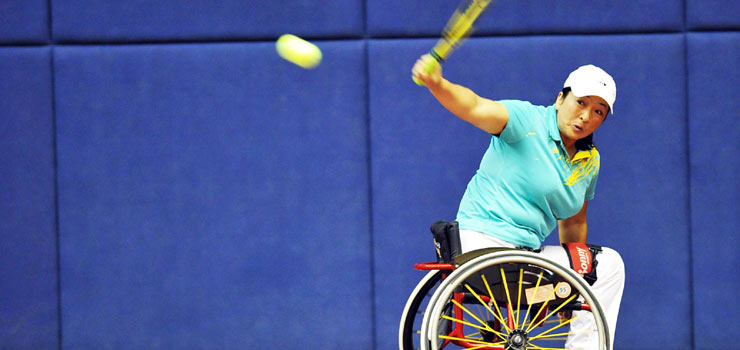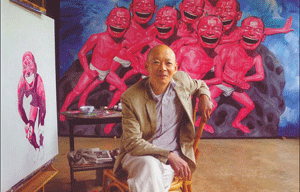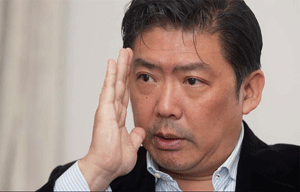China's GDP growth slows to 9.1% in Q3
Updated: 2011-10-18 10:21
(Xinhua)
|
|||||||||
China's GDP expanded 9.1 percent year-on-year in the third quarter of the year, marking the slowest pace since the third quarter of 2009.
The growth rate was down from 9.5 percent in the second quarter of this year and 9.7 percent in the first quarter, the National Bureau of Statistics (NBS) said Tuesday.
| ||||
The slowdown was a desired outcome of China's macro-economic regulations as the government continued its efforts in curbing soaring property prices, reining in inflation and regulating local government financing vehicles, said Lian Ping, the chief economist with Bank of Communications.
Lian expected the country's GDP growth to remain above 9 percent this year.
China's economy expanded 2.3 percent on a quarterly basis in the July-September period, NBS spokesman Sheng Laiyun said at a press conference.
According to preliminary statistics, the country's GDP reached 32.07 trillion yuan ($5.01 trillion) in the first nine months, up 9.4 percent year-on-year, Sheng said.
He noted the country's economic performance was "generally good" and had developed according to macro-economic regulations in the first nine months.
Despite challenges and uncertainties both at home and abroad, it is likely that China's economy would maintain its stable and relatively fast growth in the coming period, boosted by a strong growth momentum, Sheng said.
He said there was an obvious trend of the country's economic development shifting from a stimulus policy-driven growth to a self-initiated mode.
Industrial value-added output rose 13.8 percent year-on-year in September, up from the 13.5 percent growth in August. Fixed assets investment rose 24.9 percent year-on-year in the first nine months, compared with a 25-percent gain in the January-August period.
In September, the country's retail sales expanded 17.7 percent from a year earlier, following an increase of 17 percent in August.
Sheng said the country's consumer price increase had been "preliminarily contained" as the growth of the consumer price index (CPI), a main gauge of inflation, had fallen for two consecutive months.
It is quite likely that consumer price increase would continue to ease in the last quarter of the year, he said.
The government made curbing consumer prices a top priority in this year's macro-economic regulations and vowed to keep the annual growth of CPI at around 4 percent this year.
To mop up the excessive liquidity that helps fuel inflation, the government implemented a prudent monetary policy this year. The central bank has raised the benchmark interest rates three times this year and hiked the reserve requirement ratio for commercial banks six times.
The central bank may not relax the prudent monetary policy in the short term with the inflation rate still at a high level, said Liu Ligang, director of the economic research department of ANZ Greater China.
He added that the central bank is likely to enhance financial support for capital-strapped small and medium-sized enterprises.
"The country's economy is heading for a soft landing," Liu said.
Although exports would continue to moderate on weaker demand from developed economies, growth would still be supported by domestic demand, investment and consumption, he said.
Liu estimated the country's economic growth would stand at 9.4 or 9.5 percent this year.
Fixed asset investment up 24.9%
The fixed asset investment rose 24.9 percent year-on-year to 21.23 trillion yuan ($3.33 trillion) in the first nine months of the year, the NBS said.
The growth rate was 0.7 percentage points lower than that during the first six months, said the NBS .
Investment in the nation's property sector rose 32 percent year-on-year to reach 4.42 trillion yuan, of which 3.18 trillion yuan went into residential housing, an increase of 35.2 percent from the same period last year.
Retail sales up 17% in Q1-Q3
The retail sales grew 17 percent to 13.0811 trillion yuan ($2.05 trillion) in the first nine months from a year earlier, said the NBS.
In September, the country's retail sales grew 17.7 percent from a year earlier and were up 1.35 percent from August.
Urban retail sales increased 17.1 percent year-on-year to 11.33 trillion yuan in the first nine months, while rural retail sales climbed 16.4 percent to 1.75 trillion yuan, the NBS said.
The catering sector generated sales of 1.47 trillion yuan, a rise of 16.5 percent from a year earlier, while commodities retail sales increased 17 percent to 11.61 trillion yuan.
Auto sales grew by 16 percent during the first three quarters, down 18.9 percentage points from a year earlier.
The government slashed its car purchase tax for small-engine vehicles from 10 percent to 5 percent in 2009. It raised the lowered tax to 7.5 percent in 2010, and then put it back at the normal rate at the start of this year.
Sales of furniture jumped 31.4 percent during the same period, down 7 percentage points from a year earlier, while sales of home appliances and audiovisual equipment climbed 20.5 percent, down 7.6 percentage points from a year earlier, the NBS said.
Industrial value-added output up 13.8% in Sept
The industrial value-added output grew 13.8 percent year-on-year in September, the NBS) said.
The figure was higher than the 13.5 percent annual growth in August.
On a monthly basis, the output increased 1.2 percent from that of August, said the NBS.
In the first three quarters, industrial value-added output increased 14.2 percent year-on-year, down 0.1 percentage point from the first half of this year, said Sheng.
Industrial value-added output measures the final output value of industrial production, or the value of gross industrial output minus intermediate input, such as raw materials and labor











